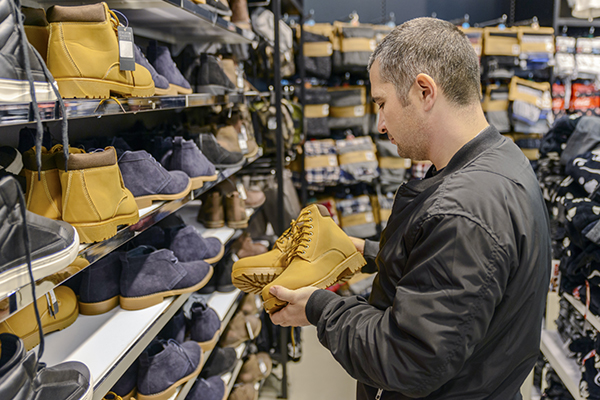
Choosing the right shoe can make all the difference
By Maryam Farag
Skimping on costs, comfort, the wrong move: experts

Protective shoes and boots play a vital role for employees. (igorgeiger/Adobe Stock)
This feature was originally published by MRO magazine, a sister publication to OHS Canada.
Does footwear make a difference on the job? Not everyone thinks about the importance of wearing the right shoes to work.
Many HR people have codified rules in dress code policies, but a good number of companies and employees could benefit from more awareness of why it is important to wear protective and supportive footwear.
Protection is important
Steel toed or protective work shoes play a vital role in protecting front-line workers in manufacturing, industrial, and various maintenance types of jobs. Also, they can be considered a category of personal protective equipment (PPE), and many labour departments have laws about the distribution of PPE to workers.
According to the Ontario Ministry of Labour, Training and Skills Development, in workplaces where regulations under the OHSA require “foot protection appropriate in the circumstances” or “suitable footwear,” employers should conduct a risk assessment to determine the foot protection appropriate in the circumstances or suitable footwear to protect the worker.
“A supervisor has to make sure that workers are wearing appropriate foot protection, so not just foot protection, but foot protection appropriate to circumstance as required by the employer and by the act of regulations.” said Ron Landry, Senior Manager, Provincial Industrial Health and Safety, Ontario Ministry of Labour, Training and Skills Development.
Comfort pays off
Wearing the wrong shoes can result in numerous health conditions. According to the Canadian Centre for Occupational Health and Safety (CCOHS), some foot problems are so common that they can occur in any workplace and under any working conditions, such as: severely aching feet, blisters, calluses, corns, rheumatism, arthritis, malformations of toes, fallen arches (flat feet), bunions and sprains.
The common causes of these foot problems are long periods of standing, hard flooring, and poorly fitted footwear; pointed shoes, lack of arch support, and too loose or too tight footwear.
“You can even have hazards of injury to the foot without any machinery or equipment being present,” said Landry. “For example, if you’re in a warehouse stocking shelves and using power equipment to move things around, or even pump carts to move things around.”
In general, people tend to get sore and tired when wearing shoes that are uncomfortable and spending long hours standing or walking in a workspace. Therefore, promoting the use of comfortable footwear can help with productivity and general wellness.
Choosing sensible shoes
Another area in which footwear is important is in supporting balance and mobility. Workers may decide to skimp on shoe costs and wear the wrong shoes, which can cause them to slip, trip, stub their toes or even sprain ankles because of a lack of friction.
“If the right footwear isn’t selected, or the safety footwear isn’t worn properly, there may be an increased risk of injury from impact repression, puncture, electricity and ankle injury,” said Riane Marrs, Occupational Health and Safety Specialist, CCOHS. “It is really important to conduct a hazard workplace assessment of the activities in the workplace and choose footwear that will provide protection.”
Marrs added that employers are required to make sure that any machinery provided in the workplace is safe and in good operating condition, which should include preventative maintenance that align with the manufacturer recommendations, and they are also required to train employees and instruct them on the safe-use of the machinery.
Finally, the right pair of safety shoes helps factory workers to stay on their feet. Not to mention that there are many resources for organizations who are looking to implement a protective footwear program in their workplace, and this includes referring to the Canadian Standards Association’s section about protective footwear.